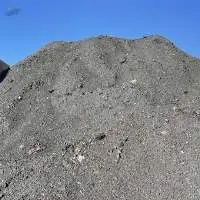
Rock Wool Rock wool is a kind of high-strength rock wool board which is made of high quality basalt as the main material, through high temperature melting and the high speed centrifugalization at first, with advanced 3D method production technology, then through the thermosetting. It has thermal insulation, A-grade fireproof, also advantages such as good hydrophobicity, high strength, sound-absorbing and noise reduction etc.
Introduction of main components: 1. Standard 2. Ledger 3. Diagonal brace 4.Base jack 5. U-head jack 6. Split the ladder Six advantages of the Scaffolding: 1.Safe 2.Save material 3.Save energy 4.Being artistic 5.More effective 6.Environment protection Application: Highway Overpass Subway Airport High building viaductor bridges tunnel engineering generating station Workshop Overpass Warehouse shelf Chimney Water tower Large stage Characteristics: 1.Multipurpose 2.Less structures, easy to operate 3.High economy 4.Easy wedge to connect 5.High loading capacity 6.Being safe and reliable
Six advantages of the Scaffolding: 1.Safe 2.Save material 3.Save energy 4.Being artistic 5.More effective 6.Environment protection Application: Highway Overpass Subway Airport High building viaductor bridges tunnel engineering generating station Workshop
In building construction, the costs of aluminum formwork has account 20%-30% for the total costs, when removed the aluminum formwork, it account 5-50% total time. Compare with the traditional timber form work, the aluminum formwork has obvious advantages. 1.Easy 2.Efficient 3.Saving 4.Safety 5.Environment friendly 6.Value Maintain
In building construction, the costs of aluminum formwork has account 20%-30% for the total costs, when removed the aluminum formwork, it account 5-50% total time. Compare with the traditional timber form work, the aluminum formwork has obvious advantages. Easy Efficient Saving Safety Environment friendly Value Maintain
Supplier: Aluminium ( ingots, t bars, sows, rods), copper (cathodes, cakes, billets, ingots, rods), lead (ingots), nickel (cathodes both cut and uncut briquettes, pellets, discs, etc.), tin (ingots, etc.), zinc (ingots both regular size and jumbos), steel billets (all types including crc, hrc, hdgc, plates, sheets), concentrates and ores for above items including bauxite, manganese, clinker and iron ores etc), scraps of above items including hms 1&2 and steel scraps
Buyer: Aluminium ( ingots, t bars, sows, rods), copper (cathodes, cakes, billets, ingots, rods), lead (ingots), nickel (cathodes both cut and uncut briquettes, pellets, discs, etc.), tin (ingots, etc.), zinc (ingots both regular size and jumbos), steel billets (all types including crc, hrc, hdgc, plates, sheets), concentrates and ores for above items including bauxite, manganese, clinker and iron ores etc), scraps of above items including hms 1&2 and steel scraps
We are glad to propose 500 MT of stain less steel mill scale. Mill scale is formed on the outer surfaces during by the hot rolling lamination of stainless-steel products. At a visual inspection the material is a hard brittle sand and is mainly composed of iron oxides, mostly ferric, and is bluish black in colour, but it also contains considerable alloying elements such as chromium and nickel. The recovery ratio after melting in furnace for the most valuable alloy elements is: - Ni: 3.5 - 4.5% - Cr: 6-8% From the chemical and physical analysis performed on the scrap, and according to the European environmental rules, the material has been classified as a special non dangerous waste, listed in green list. In particular the mill scale can be classified as follows: Waste code: 10 02 10 The material is stored on cemented flooring, and it can be loaded loose in tipper trucks or containers. Chemical analysis of the material is available on request.
